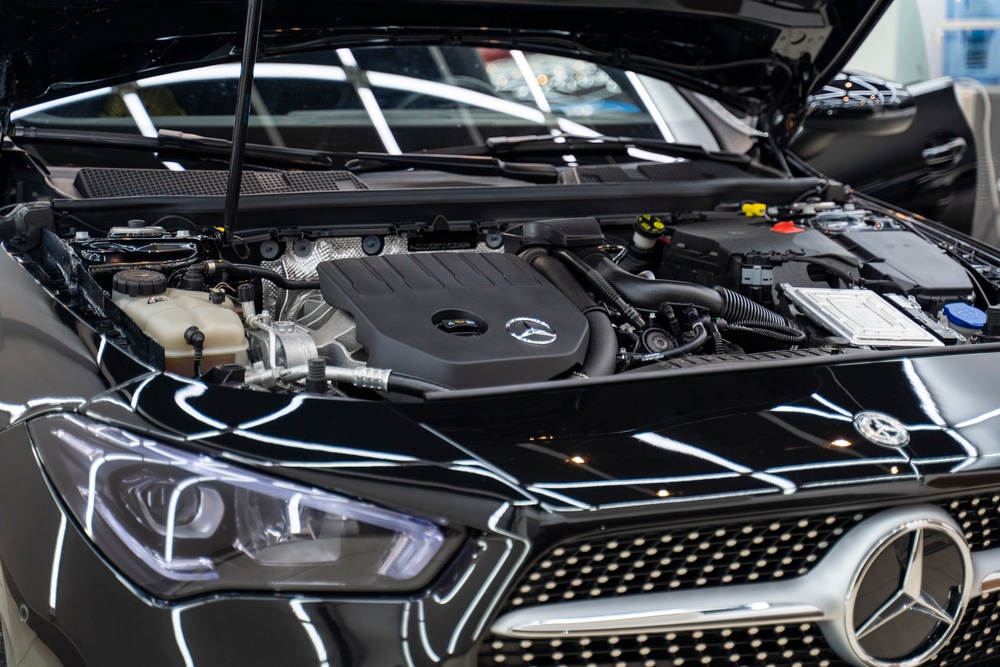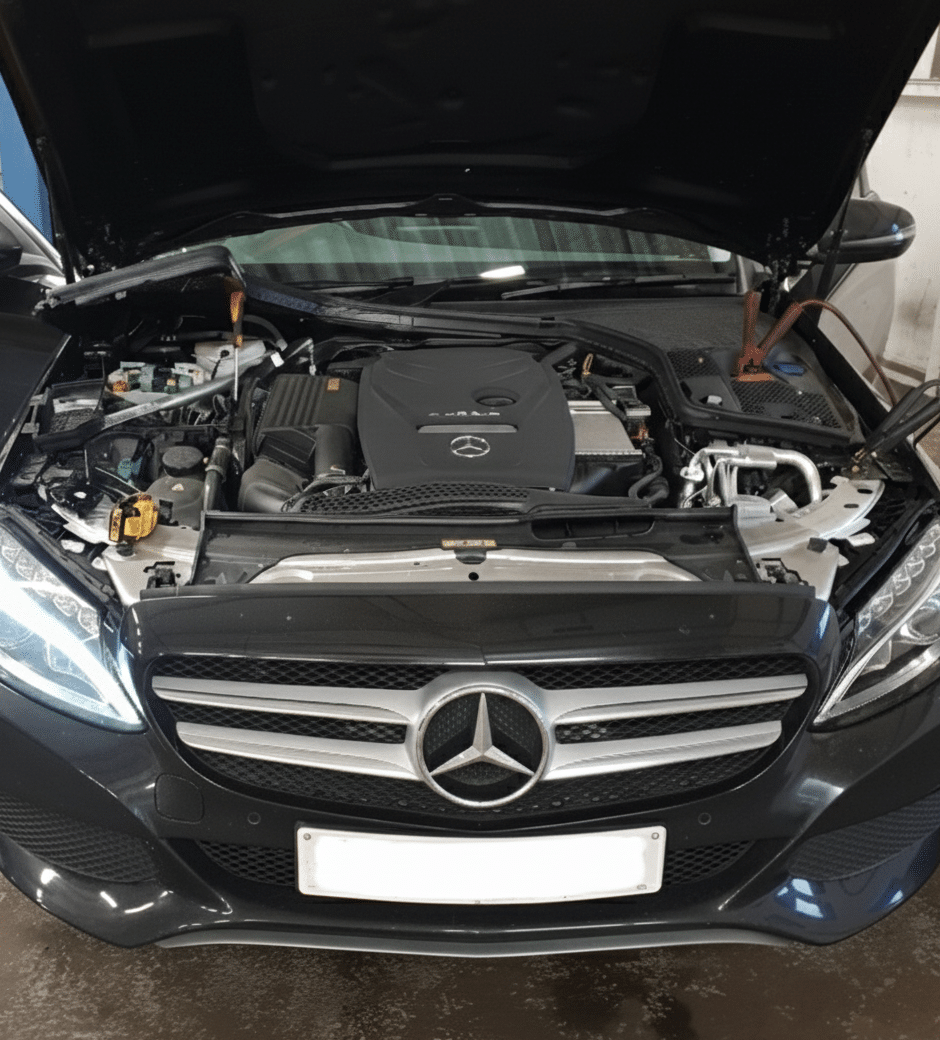Land Rover Tyre Pressure
Keeping your tyre pressures maintained is an often-overlooked maintenance task. If you own a Land Rover, you might be wondering – what is the correct tyre pressure? Are there tips I should be following when maintaining my tyres?
We answer all of these questions and more during this article. Read on to find out more!

How Do Under-Inflated Tyres Affect My Land Rover?
If you have low, underinflated tyres in your Land Rover, they will wear out quicker. You will be prone to more punctures due to tyres becoming less durable. A tyre that’s underinflated will have a higher roll resistance, leading to worsened fuel economy as more force is needed to help rotate the wheels. A combination of wet roads and under-inflated tyres also increases the chances of hydroplaning by up to 30%.
Your Land Rover tyres may have uneven tread wear if they are under-inflated. Uneven tread lowers grip and handling ability. For example, you may need to swerve out of the way of an obstruction during normal driving, a lower tyre pressure makes the car less reactive when steering suddenly and could cause an accident. Therefore your tyres need to be inflated to the correct pressure to ensure you have a safe and economical drive.
At Shires Garage, we’re here to help. Whether you seek tyre advice, inspection or top-ups, our team of Land Rover experts are proud to serve the local Langport and Taunton areas.
Recommended Tyre Pressures For Land Rover Models
Your Land Rover has specific requirements for tyre size, weight rating and pressures – all of these must match the requirements as you could get a puncture, be unsafe on the road, and require more frequent tyre replacements. There may be a difference in required pressures for winter and summer tyres too.
Land Rover vehicles usually need a higher tyre pressure at the front. The engine and transmission are housed at the front across all Land Rover models and the rear tyres have less load, requiring less pressure.
To check the correct tyre pressure for your Land Rover model, find the driver door where you will see a plate or sticker indicating the correct pressure depending on load. The information may also be available in your owner’s manual. If you’re unable to find suitable tyre pressures in these locations, then seek help from our expert team at Shires Garage. We know all about Land Rover vehicles thanks to our decades of experience.
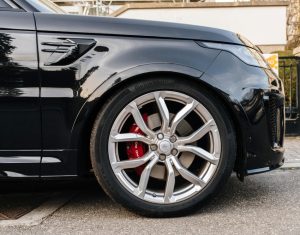
Tools Required to Check Land Rover Tyre Pressure
Modern Land Rover vehicles have in-built Tyre Pressure Monitoring Systems (TPMS) which display the pressure of each tyre thanks to sensors housed in the wheels. Alerting drivers when the pressure drops below the minimum recommended level, TPMS are a useful safety feature and also indicate punctures for them to be addressed quickly to avoid damage.
You can monitor and check the pressure of each tyre using the infotainment system. By switching on the ignition, go to the vehicle settings or service menu in your Land Rover vehicle. Then choose tyre pressure within the sub-menus.
To manually check the pressure of each tyre, you can use a pressure gauge. You can find pressure gauges at fuel station forecourts or smaller devices can be bought at car parts stores.
In a safe place, park your Land Rover and remove the dust caps to reveal the valve. Use the tyre pressure gauge to measure the tyre pressure. Hold the gauge firmly to get an accurate measurement.
Take the measurement and compare it to the recommended tyre pressure from your driver’s door or owner’s manual. If the reading is higher, let some air out and re-measure, if it is still too low, top up with more air and repeat the measurement until you reach the recommended pressure.
Many things can go wrong when measuring tyre pressure. Different temperatures can cause inaccurate readings, and the pressure gauge may not be accurate or used incorrectly. If you are ever in doubt or want professionals to assure you of the correct pressures, reach out to our team of Land Rover specialists at Shires Garage today.
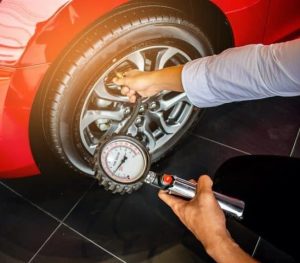
Is the Tyre Pressure Monitoring System Reliable in my Land Rover?
Generally, the TPMS is considered safe and reliable for monitoring your tyre pressures in your Land Rover. To be 100% certain that it is working well, it may need recalibrating. At Shires Garage, we expertly perform TPMS calibrations to give Land Rover owners complete peace of mind.
With a team of experienced Land Rover specialists on hand, we handle many Land Rover vehicles that enter our workshop every month. If you need new tyres, a service, or a repair, Shires Garage is here. We also perform tyre pressure monitoring system checks and calibrations whilst checking the pressures of your Land Rover tyres to make sure they match recommendations. Reach out to us today for all your tyre needs!
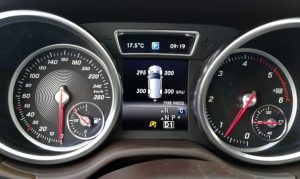
Road Conditions Affect Tyre Pressures In Your Land Rover
The external environment affects tyres, it’s essential that you have your tyres adjusted depending on the climate. Colder temperatures reduce tyre pressure and hotter temperatures increase tyre pressures. Tyre pressure is measured in Bar or PSI (Pounds Per Square Inch) and can be found on the inside of the driver’s door or in your Land Rover owner’s manual.
Also during everyday driving, your tyre pressures change. Low tyre pressure means higher fuel consumption, and due to heat build-up in the rubber, it reduces the lifespan of your tyre. Also on hot days, when driving fast, your tyre pressures increase by up to 10 PSI (or 0.7 Bar). You must check your tyre pressures frequently to ensure temperatures don’t affect their pressures. If you need expert help when it comes to tyre pressures and maintenance, reach out to Shires Garage today!
How to Extend the Lifespan and Maintain Your Land Rover Tyres Correctly
To drive safely and comfortably, you must keep to the correct tyre pressures. At Shires Garage, our team of Land Rover experts help every customer who enters our workshop, ensuring they are expertly taken care of, and their vehicle is running safely.
You can also follow these essential tyre maintenance tips:
- Inspect your Land Rover’s tyre condition: Make sure your tyres are safe by checking for bulges, cuts, or objects stuck in them. If you find a puncture while driving, pull over safely and switch to your spare wheel.
- Check your tyre tread depth: There’s a legal requirement for a minimum tread depth of 1.6mm. Falling below this limit can result in fines of up to £2,500 per wheel and three penalty points on your driving licence. If your tyres are close to or below the 1.6mm legal limit, it’s wise to replace them.
- Select suitable tyres: All-weather tyres work well for year-round performance in most areas. However, in European countries with extreme weather, you may need to switch between summer and winter tyres.
- Confirm wheel alignment: Incorrect wheel alignment can lead to uneven tyre wear, causing tyre damage, increased fuel consumption, and affecting your vehicle’s handling.
- Keep an eye on the maximum load capacity: Overloading your vehicle can cause excessive tyre wear and affect its handling. Most tyres now come with a load index, and it’s crucial not to exceed the specified load limit.
- Be cautious around kerbs: One of the main causes of tyre damage is hitting or mounting kerbs without care. When parking by the road, approach kerbs slowly and manoeuvre carefully to avoid contact with your tyres.
- Practise safe driving habits: Whenever possible, avoid heavy braking, accelerate gradually, make smoother transitions, steer clear of bumps, potholes, and road irregularities, and reduce your speed when encountering speed bumps.
Your Land Rover tyres could be checked by professionals at Shires Garage – reach out to our team today for complete peace of mind!

